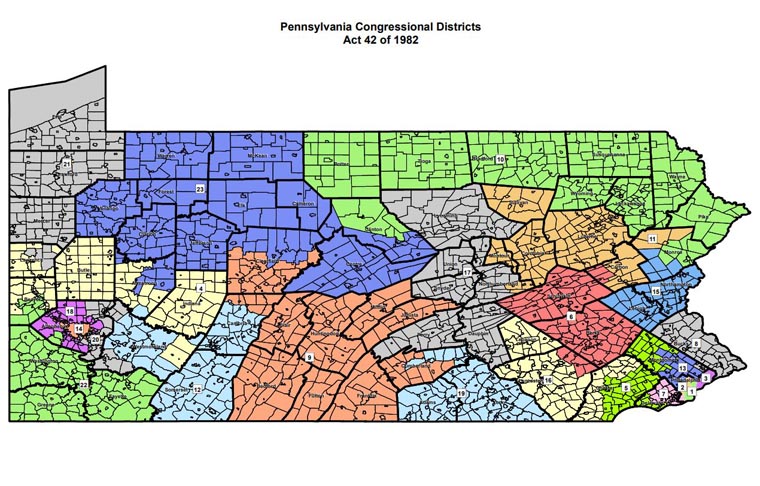Methodology



The older maps:
- Followed the federal Apportionment Act of 1911 requiring that congressional districts be
“… contiguous and compact territory …” with an
“… equal number of inhabitants.” - Resisted engaging in overt partisan gerrymandering.
- Included adjustments to favor or disfavor individual legislators.
Since 1968:
- The Pennsylvania constitution requires an additional rule:
“ … [u]nless absolutely necessary no [political boundary] shall be divided … in forming either a senatorial or representative district.” - Explicit state constitutional rules apply only to state senate and representative districts.
- However, the Pennsylvania Supreme Court later ruled that constitutional requirements must apply to Congressional redistricting to ensure free and equal elections.
More recently:
- Amanda Holt, a voter and self-taught mapper, challenged the 2011 state representative map, leading to an improved 2012 state legislative map.
- The League of Women Voters of PA challenged the 2011 congressional map in a 2018 lawsuit, resulting in the Pennsylvania Supreme Court’s invalidation of the map and installation of the 2018 remedial map.
%20(2).jpg)